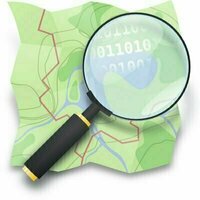Need advice about which tool to choose?Ask the StackShare community!
Leaflet vs Mapbox: What are the differences?
Introduction
Leaflet and Mapbox are both popular mapping libraries that are widely used in web development. While they share some similarities, there are key differences between the two that set them apart. In this article, we will explore these differences and understand when to use Leaflet or Mapbox in different scenarios.
Map Rendering and Tiles Leaflet is a lightweight and versatile JavaScript library that focuses on rendering maps. It provides basic functionality for displaying map layers and markers, but it relies on third-party map providers, such as OpenStreetMap, for map tiles. On the other hand, Mapbox is a mapping platform that not only offers map rendering but also provides its own tileset, which includes high-quality base maps designed specifically for Mapbox users. This means that with Mapbox, you have more control over map styles and can create custom maps using Mapbox Studio.
Mapping Features While both Leaflet and Mapbox provide fundamental mapping features, Mapbox offers a more extensive toolkit when it comes to advanced mapping capabilities. Mapbox allows you to implement features like geocoding, routing, and data visualization directly within the library, making it a comprehensive solution for complex mapping applications. Leaflet, on the other hand, focuses more on the core mapping functionality and provides a base for developers to build upon, allowing for more flexibility and customization.
Customization and Styling Leaflet provides a straightforward API for customizing and styling maps, allowing developers to tweak various aspects such as markers, popups, and layers. However, Mapbox offers more advanced options for map customization. With Mapbox, you can create custom map styles using Mapbox Studio, which provides a user-friendly interface for designing and fine-tuning map styles. This allows you to have full control over the visual appearance of your maps, including colors, fonts, and even 3D extrusions.
Pricing and Licensing Another significant difference between Leaflet and Mapbox lies in their pricing and licensing models. Leaflet is an open-source library released under the BSD-2-Clause license, which means it is free to use and modify, even for commercial purposes. Mapbox, on the other hand, offers different pricing plans, including a free tier with limited usage and paid plans with more extensive features and higher usage limits. Mapbox also provides commercial licenses for enterprises that require additional support and customization options.
Community and Ecosystem Both Leaflet and Mapbox have active and supportive communities, but Leaflet's community is more extensive, thanks to its open-source nature and its longer history. Leaflet has been around since 2010, which has resulted in a large user base, numerous plugins, and extensive documentation. Mapbox, on the other hand, has a growing community centered around its mapping platform and services, but it may not have the same breadth of community-driven contributions as Leaflet.
Integration and Dependencies Leaflet is designed to be lightweight and modular. It has minimal dependencies, making it easy to integrate into existing web applications. On the other hand, Mapbox comes with its own JavaScript SDK, which provides a more cohesive and integrated solution for map rendering and accompanying services. While this can be advantageous for developers starting from scratch or using Mapbox as their primary mapping platform, it may introduce additional dependencies and complexity for projects that already rely on other frameworks or libraries.
In summary, Leaflet is a lightweight and versatile mapping library that focuses on rendering maps and provides a base for custom development, while Mapbox is a comprehensive mapping platform that offers advanced features like geocoding, routing, and data visualization, along with its own tileset and map styling capabilities. The choice between the two depends on the specific requirements of your project, the level of customization needed, and your budget considerations.
From a StackShare Community member: "We're a team of two starting to write a mobile app. The app will heavily rely on maps and this is where my partner and I are not seeing eye-to-eye. I would like to go with an open source solution like OpenStreetMap that is used by Apple & Foursquare. He would like to go with Google Maps since more apps use it and has better support (according to him). Mapbox is also an option but I don’t know much about it."
I use Mapbox because We need 3D maps and navigation, it has a great plugin for React and React Native which we use. Also the Mapbox Geocoder is great.
Google Maps is best because it is practically free (they give you $300 in free credits per month and it's really hard to go over the free tier unless you really mean business) and it's the best!
I use OpenStreetMap because that has a strong community. It takes some time to catch up with Google Maps, but OpenStreetMap will become great solution.
I use Google Maps because it has a lot of great features such as Google's rich APIs, geolocation functions, navigation search feature, street map view, auto-generated 3D city map.
I use OpenStreetMap because i have the control of the environment, using Docker containers or bare-metal servers.
Pros of Leaflet
- Light weight32
- Free28
- Evolutive via plugins12
- OpenStreetMap10
- Strong community9
- Choice of map providers7
- Easy API6
- Alternative to Google Maps3
Pros of Mapbox
- Best mapping service outside of Google Maps28
- OpenStreetMap22
- Beautifully vectorable15
- Fluid user experience11
- Extensible8
- React/ RNative integration7
- 3D Layers5
- Low Level API4
- Affordable4
- Great customer support3
- Custom themes3
- High data volume rendering2
























